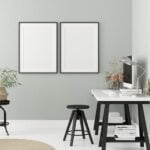Decorating a new home is an exciting and daunting task. From selecting the right interior design style to adding personal touches, the process can be overwhelming. So, how long does it take to decorate a new home?
Understanding the scope of the project is crucial in determining the timeline and budget for decorating. In this article, we will explore the various aspects of decorating a new home, including setting a realistic timeline, creating a detailed budget, working with professionals, and maintaining and updating the decor over time.
When it comes to decorating a new home, it’s important to have a clear understanding of the scope of the project. This includes assessing the size of your home, the number of rooms that need to be decorated, and any specific requirements or challenges that may affect the timeline. By understanding these factors, you can better plan and allocate resources for your decorating project.
Setting a realistic timeline for decorating is essential in managing expectations and ensuring that the project runs smoothly. Factors such as the availability of materials, furniture delivery lead times, and contracting professionals will all impact how long it takes to complete your home’s decor. Additionally, creating a detailed budget for your decorating project will help you prioritize expenses and make informed decisions throughout the process.
Setting a Realistic Timeline for Decorating
When it comes to setting a realistic timeline for decorating a new home, it’s important to consider the scope of the project and the various factors that can impact how long it will take to complete. Factors such as the size of the home, the extent of the renovations, and whether or not you are hiring professionals can all play a role in determining the timeline for decorating.
One key consideration when setting a timeline for decorating is to be realistic about how much time each step of the process will take. For example, selecting the right interior design style for your home may require some research and contemplation before making a decision. Similarly, shopping for furniture, decor, and accessories can also take time, especially if you are trying to find pieces that fit within a specific budget or aesthetic.
Another important factor to consider when setting a realistic timeline for decorating is whether or not you are working with professionals. Hiring an interior designer or contracting out certain aspects of the decorating process can often speed up the timeline, as these individuals have the expertise and resources to execute the project efficiently. On the other hand, opting for a DIY approach may extend the timeline depending on your availability and skill level.
Creating a Detailed Budget for the Project
When it comes to decorating a new home, creating a detailed budget for the project is essential. Without a clear understanding of how much you are willing and able to spend, the project can quickly spiral out of control. Here are some key steps to take when creating a budget for your home decorating project:
- Assess your financial situation: Before diving into any home decorating project, it’s important to take a good look at your current financial situation. Evaluate how much you can comfortably spend on decorating without putting yourself in financial strain.
- Prioritize your spending: Determine which areas of your home are the most important to decorate and allocate funds accordingly. Whether it’s the living room, bedroom, or kitchen, prioritize where you want to allocate the majority of your budget.
- Factor in unexpected expenses: When creating a budget for your home decorating project, be sure to leave some wiggle room for unexpected expenses that may arise. From unforeseen repairs to last-minute design changes, having some flexibility in your budget will help you navigate any surprises along the way.
Remember that creating a detailed budget for your home decorating project is crucial in ensuring that you stay within your financial means and avoid overspending.
- Assess your financial situation
- Prioritize your spending
- Factor in unexpected expenses
Selecting the Right Interior Design Style for Your Home
Once you have a good understanding of the scope of your decorating project, it’s time to think about the interior design style that best fits your new home. Selecting the right style is crucial as it sets the tone for the entire space and impacts the overall look and feel of your home. Here are some popular interior design styles to consider:
- Modern/Contemporary: Clean lines, minimalism, and a focus on open spaces
- Traditional: Classic and timeless with ornate details and elegant furnishings
- Transitional: A blend of traditional and contemporary elements for a balanced and timeless look
- Industrial: Raw and unfinished look with exposed brick, metal accents, and reclaimed materials
- Coastal: Relaxed and breezy with a color palette inspired by the beach and ocean
It’s important to choose a design style that resonates with you personally while also complementing the architecture of your home. Consider factors such as your lifestyle, preferences, and the atmosphere you want to create in each room.
Next, think about how you can incorporate this style into different areas of your home. For example, if you decide on a modern/contemporary style, you might opt for sleek furniture pieces in the living room while keeping the bedroom more cozy with plush textiles.
Ultimately, selecting an interior design style should be an enjoyable process that reflects your taste and personality. Keep in mind that this decision will guide all your future decorating choices, so take your time to explore different options before finalizing your choice. As you contemplate which design style suits you best, consider practical aspects such as maintenance requirements to ensure a seamless transition from selection to implementation.
Working With a Professional Interior Designer
When it comes to decorating a new home, many homeowners opt to work with a professional interior designer to help them bring their vision to life. A professional interior designer can provide valuable expertise, resources, and guidance throughout the process, ultimately saving time and helping achieve the desired result.
The Role of an Interior Designer
Interior designers are trained professionals who specialize in creating functional and aesthetically pleasing interior spaces. They have the knowledge and expertise to understand the latest design trends, space planning, choosing color schemes, and selecting appropriate furniture and decor for a specific style or theme.
Benefits of Hiring a Professional
One of the most significant advantages of working with an interior designer is that they can help streamline the entire decorating process. With their industry connections and access to trade-only resources, they can source high-quality furniture, fabrics, and decor elements that may not be available to the general public. Additionally, interior designers can help homeowners avoid costly mistakes by providing guidance on spatial planning, furniture arrangement, and overall design cohesion.
While working with an interior designer can be beneficial in many ways, it’s essential for homeowners to consider the cost implications. The fees associated with hiring a professional designer vary depending on factors such as experience level, scope of work, and location. However, many homeowners find that the investment in hiring an interior designer is well worth it for the peace of mind and expert guidance they provide throughout the decorating process.
DIY vs Hiring Professionals
When it comes to decorating a new home, one of the key decisions to make is whether to take the do-it-yourself (DIY) approach or to hire professional interior designers and decorators. Both options have their own set of pros and cons, and understanding them can help you make the right choice for your specific needs and budget.
One of the main advantages of DIY decorating is cost savings. By doing the work yourself, you can avoid paying for professional fees and labor costs. This can be particularly beneficial if you are working with a limited budget. Additionally, taking the DIY route allows you to have full creative control over the design process, ensuring that your personal style shines through in every aspect of your home decor.
On the other hand, hiring professionals brings its own set of benefits. Professional interior designers and decorators have expertise and experience in creating cohesive and visually appealing designs. They also have access to a wide network of suppliers and manufacturers, which means they can source unique pieces and high-quality materials for your home decor project. Additionally, working with professionals can save you time and effort, as they will handle all aspects of the design process from conceptualization to execution.
It’s important to carefully weigh these pros and cons when deciding between DIY decorating and hiring professionals. Ultimately, the choice will depend on factors such as your budget, timeline, personal preferences, and level of expertise in design and decor.
| DIY Decorating | Hiring Professionals |
|---|---|
| Cost savings | Expertise and experience |
| Creative control | Access to unique pieces |
| Time commitment | Time savings |
Shopping for Furniture, Decor, and Accessories
When it comes to decorating a new home, one of the most exciting aspects is shopping for furniture, decor, and accessories. This process can take time but it is essential to finding pieces that will truly make your new house feel like home.
Researching and Planning
Before diving into the world of furniture and decor shopping, it’s important to do some research and planning. Start by creating a list of essential items you need for each room. This could include major furniture pieces such as sofas and beds, as well as smaller decor items like rugs and artwork. Consider the style and color scheme you want for each room to ensure that everything you buy complements the overall look you are trying to achieve.
Visiting Showrooms and Stores
Once you have a clear idea of what you need, it’s time to start visiting showrooms and stores. Take your time to browse through different options and don’t feel pressured to make purchases on the spot. It’s important to compare prices, quality, and styles before making any decisions. Remember that finding the perfect pieces may take some time, so be patient throughout this process.
Online Shopping
In addition to visiting physical stores, online shopping can also be a great way to find unique furniture pieces and decor items. Many websites offer a wide range of options with detailed descriptions and customer reviews. Keep in mind that shipping times may vary depending on the item and supplier, so factor that into your overall timeline for decorating your new home.
As you shop for furniture, decor, and accessories, remember that the goal is not just to fill up space but also to create a comfortable environment that reflects your personal style. By being intentional with your choices and taking your time during this part of the decorating process, you can ensure that your new home truly feels like a reflection of who you are.
Adding Personal Touches and Final Touches to the New Home
Once the major components of decorating a new home are in place, it’s time to focus on adding personal touches and final touches to make the space feel truly like your own. This stage of decorating is often the most enjoyable, as it allows you to express your individual style and personality throughout your home.
However, it’s important to approach this step with thoughtfulness and intention to ensure that the final result reflects your vision for your living space.
When adding personal touches to your new home, consider incorporating items that hold sentimental value or bring you joy. This could include family photographs, artwork collected from travels, heirloom pieces, or handmade crafts. These personal touches not only add character to your home but also serve as reminders of what is most important to you.
In addition to personal mementos, final touches such as decorative accents, textiles, and greenery can help tie the overall look of your home together. This may involve layering different textures through throw blankets and pillows, incorporating indoor plants for a touch of nature, or adding statement pieces like mirrors or wall art. The key is to pay attention to the details and create a cohesive look that reflects your style and enhances the overall aesthetic of your home.
Ultimately, the length of time it takes to add these personal and final touches will depend on the size of your home, the complexity of your design vision, and how quickly you’re able to source the right items. By carefully curating these finishing elements with intention and creativity, you can create a space that truly feels like home.
Maintaining and Updating the Decor Over Time
Once you have completed the decorating process for your new home, it is important to consider the long-term maintenance and updating of the decor. Over time, your style and preferences may evolve, and certain elements of your home may need to be updated or replaced. It’s essential to create a plan for how you will maintain and update the decor in your home to ensure that it continues to reflect your personal style and remain in good condition.
One of the first steps in maintaining and updating the decor in your home is to establish a regular cleaning and maintenance routine. This can include tasks such as dusting, vacuuming, and general upkeep of furniture, decor, and accessories. By staying on top of these tasks, you can help prolong the life of your decor items and keep your home looking fresh and inviting.
In addition to regular maintenance, it’s also important to periodically update elements of your home’s decor to keep it feeling current and reflective of your style. This can involve making small changes such as updating throw pillows or artwork, or larger updates such as replacing furniture or repainting walls. Creating a budget for ongoing updates will help you plan for these expenses as they arise.
| Maintaining and Updating Tips | Key Considerations |
|---|---|
| Establish a regular cleaning and maintenance routine. | Regular upkeep helps prolong the life of decor items. |
| Periodically update elements of your home’s decor. | Budget for ongoing updates to keep the decor feeling current. |
Conclusion
In conclusion, the process of decorating a new home can vary greatly depending on factors such as the size of the home, the scope of the project, and whether you choose to do it yourself or hire professionals. Setting a realistic timeline for decorating is crucial to managing expectations and ensuring that the project stays on track. It’s important to create a detailed budget for the project to avoid overspending and to prioritize where to allocate resources.
Selecting the right interior design style for your home is an important step in creating a cohesive and visually appealing space. Working with a professional interior designer can streamline the process and provide expert guidance in making design decisions. However, some may prefer to take on decorating as a DIY project, weighing the pros and cons of doing so versus hiring professionals.
Shopping for furniture, decor, and accessories can be time-consuming, but adding personal touches and final touches to the new home is what truly makes it feel like your own. As time goes on, maintaining and updating the decor becomes an ongoing process as trends change and personal tastes evolve.
In answering the question “How long does it actually take to decorate a new home?” there is no one-size-fits-all answer; each project is unique and requires careful planning, decision-making, and attention to detail.
Frequently Asked Questions
How Long Does It Take to Decorate a New House?
The time it takes to decorate a new house depends on the size of the space, the scope of the project, and your personal preferences. It can take anywhere from a few weeks to several months to complete the decorating process.
How Long Does It Take to Fully Furnish a New Home?
Fully furnishing a new home also varies in time depending on factors such as budget, availability of furniture, and your personal style. It can take anywhere from a few weeks to several months to fully furnish a new home.
What Should I Decorate First in a New Home?
When decorating a new home, it’s often recommended to start with the larger rooms first, such as the living room and bedroom. This allows you to establish a cohesive design aesthetic throughout the house. However, ultimately, you should decorate in whatever order feels most comfortable and manageable for you.

I’m thrilled to be your companion on this exciting journey through the world of home decor and design. With a passion for turning houses into homes and a keen eye for the finer details, I’m here to help you transform your living spaces into beautiful, functional, and meaningful havens.





